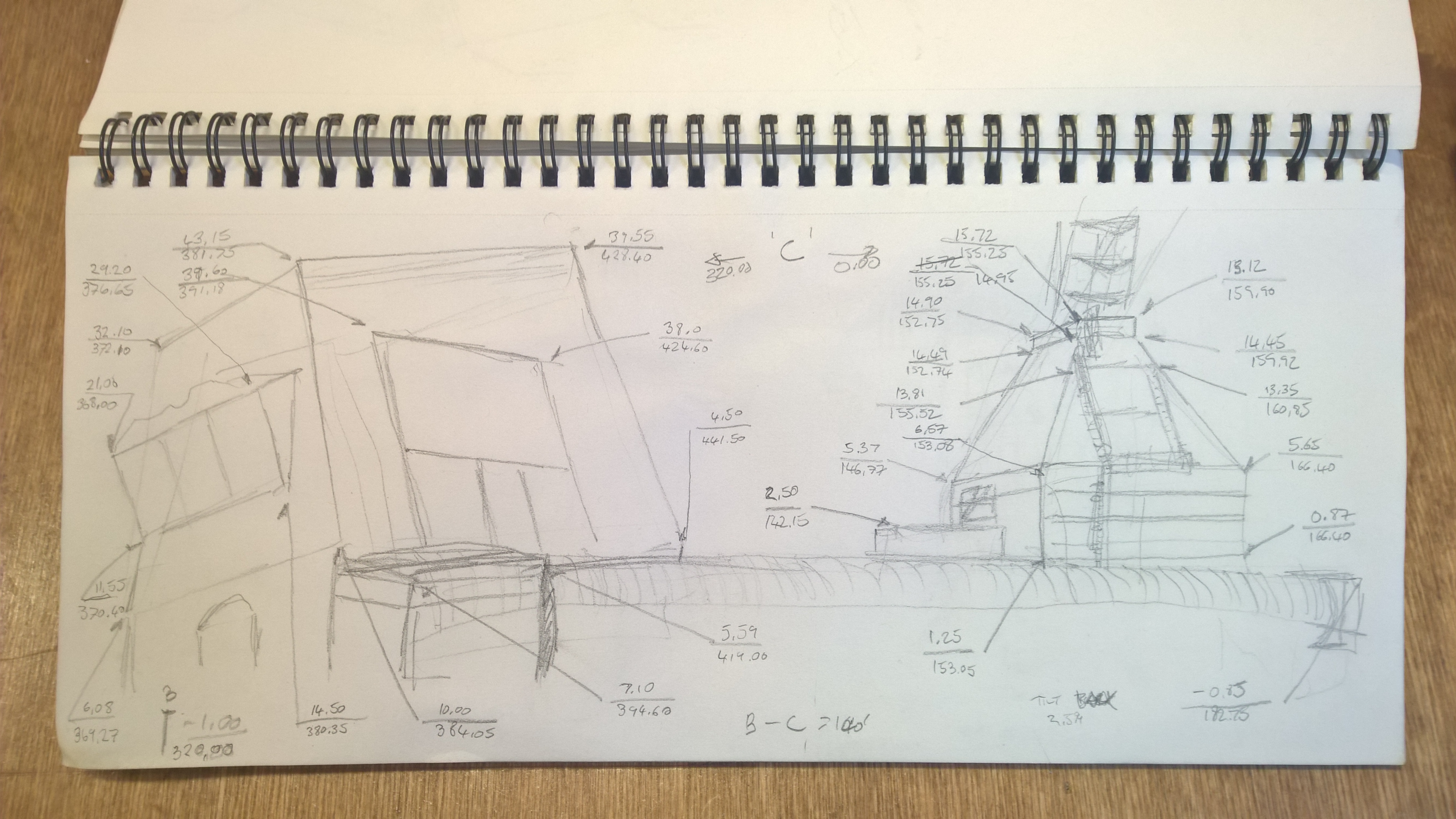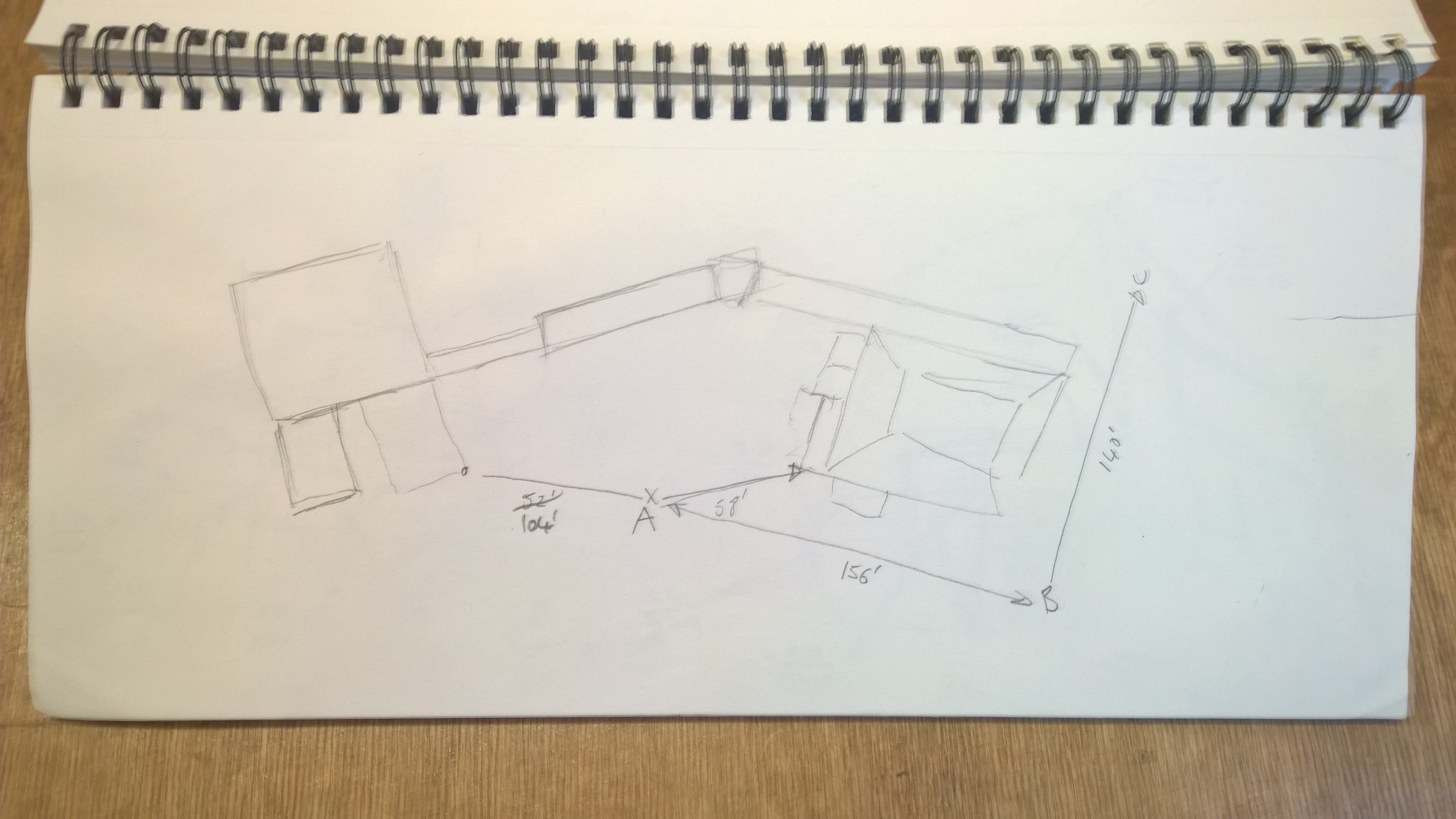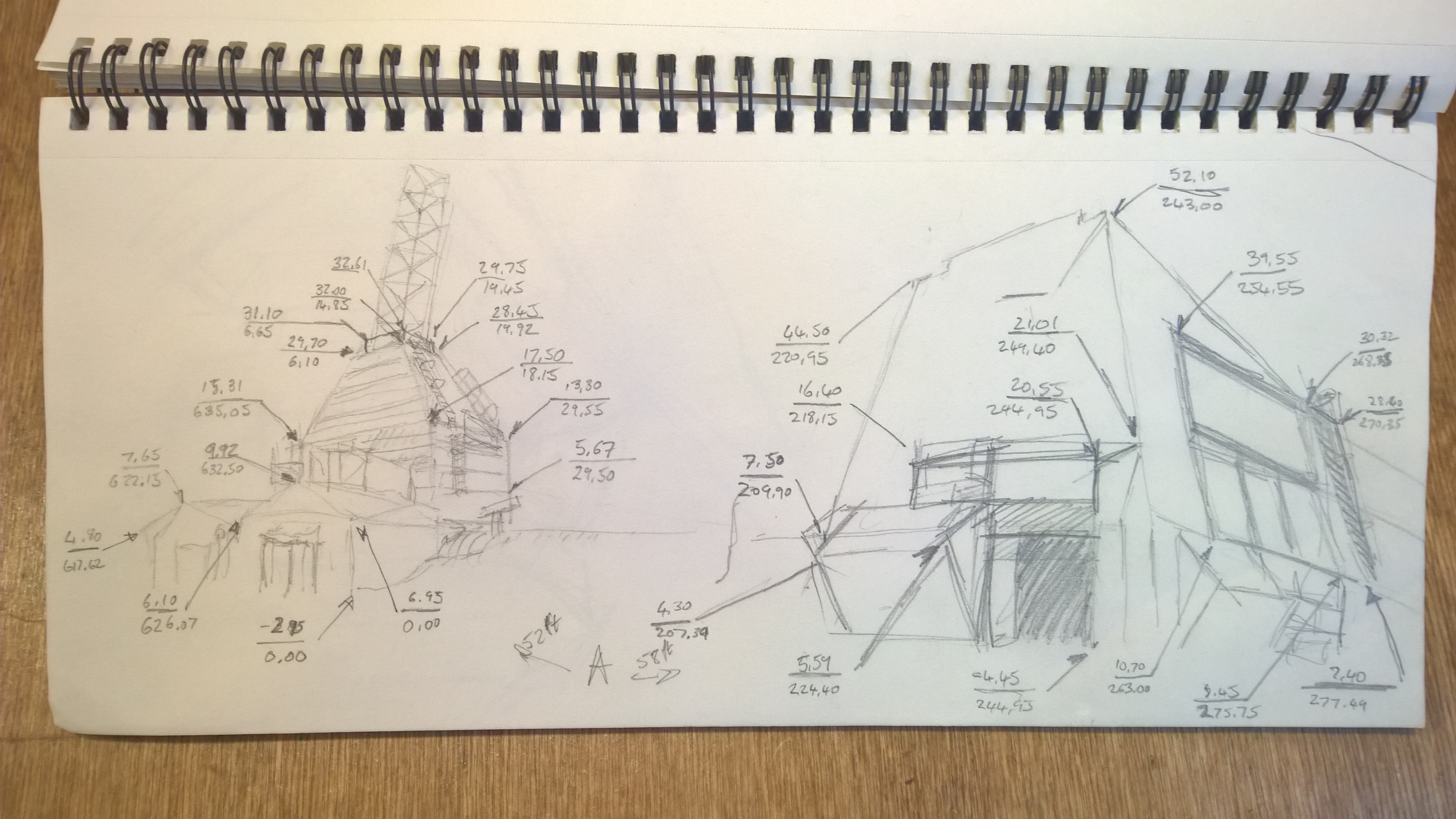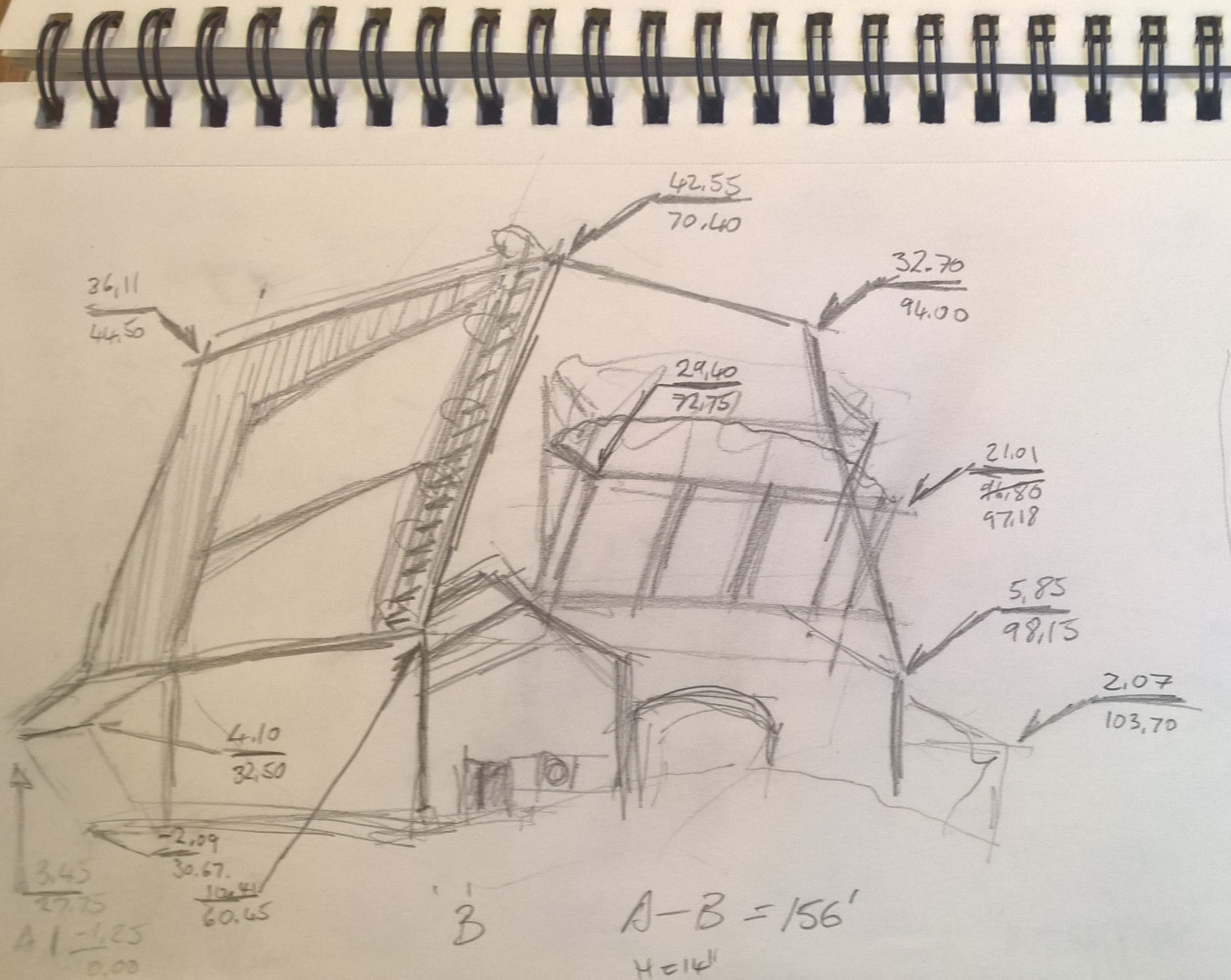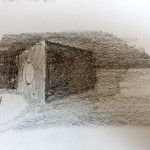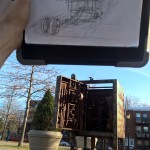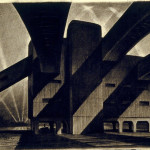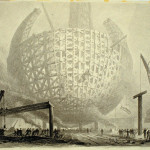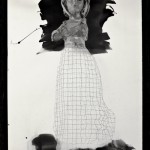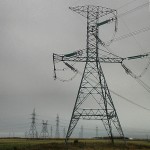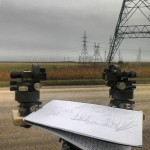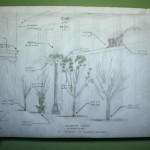June 16th 2015
I have begun the process of translating the vectors measured in Churchill into virtual space. It has seemed to take an enormous amount of time to develop the mental space to undertake and I am not entirely able to identify why this was. It feels as if i has been an evolution in my perception of space or at least my ability to think about space and perspective.
Now that I am into the process what is becoming evident is that I lack the capacity or more specifically interest to design exclusively from a formal place. I am realizing that I desire art on some level to function rather than to express. This somewhat archaic notion is not to invalidate work that exists otherwise but at very least explains the curious aesthetic likenesses between Russian Constructivism and the images and devices that I have previously made.
To this point all of my design has been shaped by function primarily and now I find that I must invoke a function to find a form. It is interesting to consider that perhaps I am developing a practice of designing aesthetic functions. That the functions perhaps posses a formal or aesthetic value constructed by their architectures of energy input and output relations. The actualization of the function into mechanism creates an external form that is a second order echo of the functional relations of the mechanism and its limitations.
So what will the functions of the Churchill sites be? I had thought of exploring telematic arms but the shape and scale of the sites do not lend themselves easily to a large scale apparatus, at least one that interacts with the atmosphere. The thing that I find most compelling about the architecture at the Churchill Rocket range is the sense of a technological psychology that I feel from it. The site is a significant part of the 20th century space race but the mind space that i feel there is a mentality of scale and metal, attempting to evoke the movement of physical the physical world toward transcendence and hope …
In creating a framework for the Future Histories project I was looking for a way to extend the process of interrogating future by presenting it within a constructed past. In looking at the work that had emerged in 2014 (Apparatus 9-12) there was also an emerging aesthetic that reached toward mythic future technologies, time machines, spaceships, etc … machines that spoke to an unknown impossible invisible functioning.
For sometime I have been aware of a desire to practically manifest that which is perceived to be impossible. If one can do something that is perceived to be impossible it opens a space where for a brief moment a witness calls into question every thing else that they believe to be impossible. Within that place assurance is unstuck and there is a flash of the abject that slips away as quickly as it is introduced. The pieces falling comfortably back into place perhaps less fixed than they were. In repeating this process as a creator I find myself appearing to collect skills and technologies that feel like pieces of a future assemblage. Collecting impossibles to, at some future time, gather them together into a meaning or a life.
I am unable to determine if this intuitive reaching and collecting is informed by a future awareness opened perhaps through a part of my being that is connected in some inexplicable way to future existences (the idea of consciousness existing at higher dimensional frames would, for example, allow for this) or if its a form of gentle delusion that creates meaning where there is none to assist in the linking and integrating of the unfolding of events and discoveries. To paraphrase Forrest Gump … it feels like both.
It is within these psy spaces that I recognize a latent desire to construct a time machine … the Future Histories project is a way for me to approach this impulse. Hopefully without demanding that it be manifested in practically (a process that at this point would most certainly break it), but to allow it to speak an echo of some knowledge or future or subconscious from the depth at which it exists …
In order to complete the CAD designs for the various sites I will need to determine the way in which I will translate the surveying data that I have collected in to 3D Models that I can augment with the future technologies.
Thus far I have collected Site and Azimuth data from a series of points at each location. This data has been recorded on pencil sketches that will be used to construct basic wire-frames of the sites.
Here are a series of drawings and data collected from two buildings at the Churchill Rocket Range :
Drawing and Printing will be the final phase of the Future Histories project however since my relationship to drawing is more than a little remedial and the process of the Photographic Drawing is sufficiently technical that I am practicing drawing frequently and will also be creating small experimental prints to work out the technicalities of the process.
Here are some test and experiments that have been made thus far …
I do however have experience working with computer drafting for parts manufacture and will be attempting to bring that experience to bear within my developing drawing practice. I will be attempting to absorb the techniques of Giovanni Battista Piranesi and Hugh Ferriss as there work is interesting to me but are also deeply connected to the imagining of future worlds in relation to architecture.
Here are a some examples of their work :
Giovanni Battista Piranesi
Hugh Ferriss
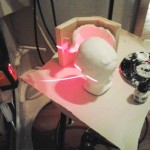 The second series of works created using photographic drawing began as an attempt at portraiture that would expand the role of the drawing from representation to the direct recording of shape and form. In order to record the form of the objects i needed large depth of field as i was recording three dimensional geometry from outside the focal plane. Read more about the process here
The second series of works created using photographic drawing began as an attempt at portraiture that would expand the role of the drawing from representation to the direct recording of shape and form. In order to record the form of the objects i needed large depth of field as i was recording three dimensional geometry from outside the focal plane. Read more about the process here
The lighting conditions required for the tiny apertures were far to hot for human consumption and small sculptures were enlisted to withstand the heat.
It was a struggle to establish a drawn three-dimensional space in conjunction with the photographic images but after introducing a technique to allow for the capture of the rear-side geometry of the sculptures the two processes cooperated to create the impression of a single sculptural form simultaneously virtual and physical.
Click here to view the images created.
Through this work I was interested in two directions for the drawn portion of the images. Firstly I wanted to continue to explore the recording of space and secondly I began to experience the drawn space as an extension of the imaginary, as direct expression of mind and its various constructions of knowing.
In order to move into interacting with landscape and larger spatial forms i could not use the laser scanning and plaster casting techniques adopted for the portraiture project, something that could quantify at a distance was needed. I initially hoped to build a form of range-finding apparatus that I would be able to operate from inside the camera but decided to begin experimenting with theodolites (a foundational surveying tool)
I worked with the theodolites annotating sketches of the structures and landscapes. Overlaying the three dimensional data, I explored the idea of depth within the two dimensional image, how they are coupled in perspective but also at odds with one another.
It is my impression that our sense of depth through vision is very weak in terms of accuracy and speed relative to our perception of height and width. That we create impressions of depth through a multifaceted correlation of senses, stereo vision, physical motion memory, sound. While we see two dimensions readily through optics and geometry we heavily construct the third through a multi-sensory correlation of impressions of space.
The field work for the forgotten futures project was in part set in motion by a suggestion from Larry Glawson.
Larry suggested that there were three things that people photographed: Architecture, Landscapes, and People. Having just stumbled across the process of combining liquid light with drawing inside the camera obscura I felt like i did not understand the relation between drawing and photography well enough to engage it directly and chose instead to embark on a form of limited survey of photographic subjects to direct my explorations while trying to understand how the hybrid drawing/photographic process re-contextualized photography generally before focusing in on more developed projects.
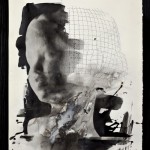 In the first project, involving architecture, the drawing and photography played a parallel role. Reach contributing a direct representation of the projection inside the camera obscura. The resulting work was interesting in juxtaposing the tow mediums and practices against one another and I was struck as someone new to drawing how the two mediums seemed to aspire toward the other; the photographic reaching for expression and the drawing reaching for realism. It did however feel like the capability of the drawing process was not being realized and that in the next series I desired to expand it in some way.
In the first project, involving architecture, the drawing and photography played a parallel role. Reach contributing a direct representation of the projection inside the camera obscura. The resulting work was interesting in juxtaposing the tow mediums and practices against one another and I was struck as someone new to drawing how the two mediums seemed to aspire toward the other; the photographic reaching for expression and the drawing reaching for realism. It did however feel like the capability of the drawing process was not being realized and that in the next series I desired to expand it in some way.
The initial question within the Future Histories project can be traced in part as a response to participating in TEDx Manitoba 2014.
Participating in TEDx was a very conflicted process for me. My practice was and is a holistic process with many simultaneous disciplines, projects and explorations contributing toward developing meaning and understanding which then in turn spawns and guides further explorations as a form of externalized knowledge building. Being asked to condense what was an organic hive of questions and concepts and experiences into something that could be articulated in a few minutes with one main idea seemed at first impossible not to mention somewhat offensive. However, I had agreed to contribute and so set about meeting the challenge of the task. It was a process of both discovery and loss seeing how many threads and ideas that have been let go and taking up that which remains. I attempted to explain my practice from different angles and positions. While each approach seemed insubstantial on its own, a particular thread emerged that seemed coherent and essential to many aspects of the work.
I had encountered writing suggesting that the difficulties of establish a space for critical dialog surrounding emerging technology temporal and cultural. The difficulties of critique of the ‘new’ are temporal in the way that the ‘new’ experience lacks established frameworks of meaning through which it may be examined in relation to other preexisting frameworks of knowledge and experience. Among others Marshall McLuhan suggests that ‘When faced with a totally new situation, we tend always to attach ourselves to the objects, to the flavor of the most recent past. We look at the present through a rear-view mirror. We march backwards into the future.’ (McLuhan – The Medium is the Message’)
I realized that, to some extent, this desire for considered technological space was being realized within my practice by a process of constructing and inventing emergent technologies within a technological history both real and mythic. This led to the question now bound up in the Future Histories Project: how can I investigate this idea of a past future more directly? How can I push the concepts further and explore them through practice … ?


